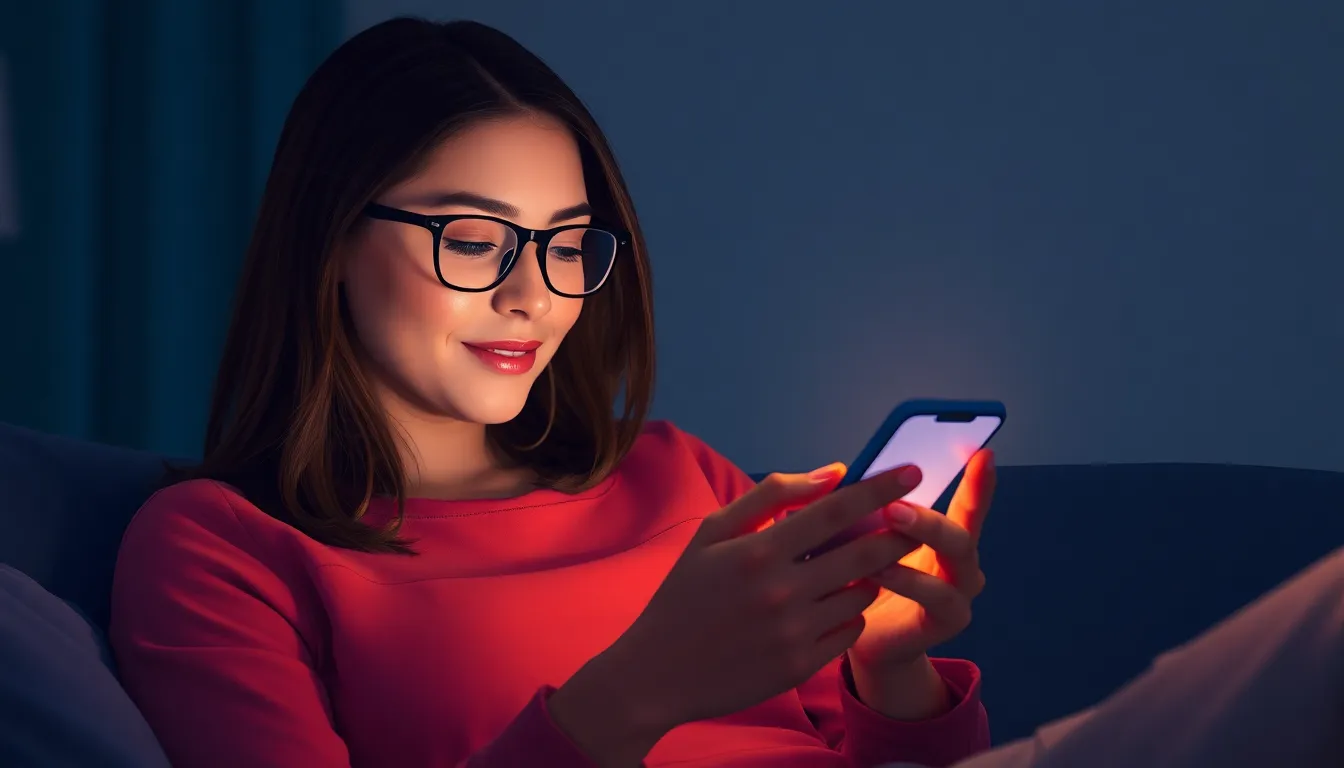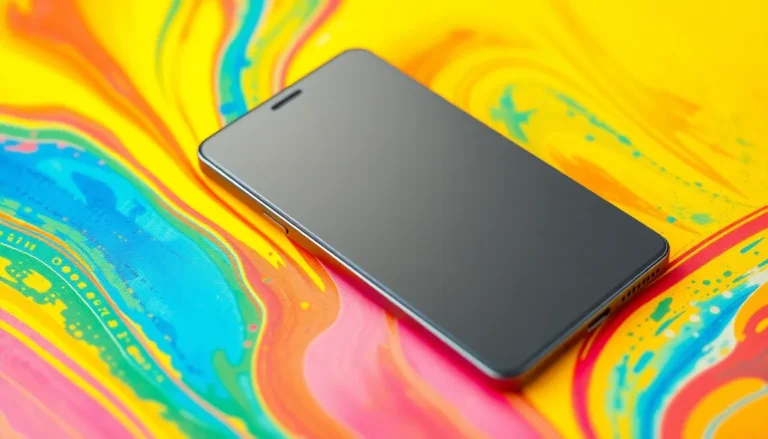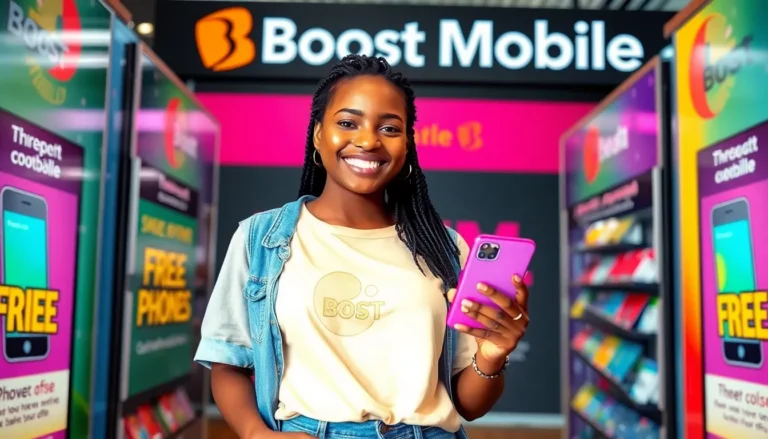As the sun dips below the horizon, the glow of smartphones can be blinding, turning late-night scrolling into a mini light show. Enter smartphone night mode—a feature designed to save eyes and sanity. It’s like having a personal bouncer for your screen, kicking harsh blue light to the curb and inviting soothing warm tones to the party.
But night mode isn’t just about comfort; it’s also about keeping your sleep schedule from going haywire. Who knew that a simple setting could help users drift off to dreamland instead of staring at the ceiling? In a world where every moment counts, night mode might just be the unsung hero of modern technology, ensuring users can enjoy their late-night memes without regretting it in the morning.
Table of Contents
ToggleOverview of Smartphone Night Mode
Smartphone night mode serves as an essential feature for users seeking comfort during late-night screen interactions. This mode reduces blue light exposure while introducing warmer tones, thereby creating a more relaxing viewing experience. By adjusting the display’s color temperature, night mode can significantly enhance users’ nighttime activities.
Screens retain their brightness while mitigating harsh lighting effects, allowing users to browse, read, or watch videos without straining their eyes. Users experience fewer disruptions in their sleep patterns when engaging with devices after dark. The transition to warmer hues reduces the likelihood of melatonin suppression, which is crucial for achieving restful sleep.
Many smartphones come equipped with customizable night mode settings. Users can schedule automatic activation based on their preferences or the local sunset time. This flexibility ensures a seamless transition in screen ambiance as the day turns to night, promoting prolonged comfort.
Benefits highlighted by various studies support the advantages of using night mode. Research indicates that users report improved eye comfort and reduced visual fatigue. Additionally, a cleaner, softer interface facilitates more enjoyable late-night activities, further encouraging engagement with the device.
Manufacturers increasingly recognize the value of night mode functionality. Features are now standard across multiple operating systems and devices, making this tool readily accessible. Users enjoy the splendor of technology designed to prioritize their well-being without sacrificing entertainment or productivity.
Benefits of Smartphone Night Mode

Smartphone night mode offers several notable benefits for users, enhancing overall comfort and well-being during late-night use. Notably, it reduces exposure to blue light, which contributes to eye strain and fatigue.
Reduced Eye Strain
Reduced blue light exposure leads to decreased eye strain. Users find scrolling and reading on their devices more comfortable in night mode due to the warmer tones. Studies indicate that fewer symptoms of digital eye strain occur when users activate night mode. Additionally, many individuals appreciate the ability to adjust brightness without sacrificing visual clarity. Reduced glare from screens allows for longer usage hours without discomfort. Enhanced visual comfort becomes essential in today’s digital environment, where extended screen time is common.
Improved Sleep Quality
Improved sleep quality serves as another significant advantage of smartphone night mode. Users experience fewer disruptions to their circadian rhythms thanks to the diminished blue light exposure during evening hours. Sleep-friendly color temperatures allow for easier relaxation before bedtime. Research highlights the correlation between reduced melatonin suppression and better sleep outcomes. Many users report feeling more rested after employing night mode consistently. Automating this feature based on personal schedules helps maintain healthy sleep routines, making night mode an invaluable tool for those who prioritize rest.
How Smartphone Night Mode Works
Smartphone night mode operates through advanced display technology aimed at enhancing user comfort during nighttime use. It automatically adjusts the color temperature and reduces blue light emission, effectively promoting better sleep.
Color Temperature Adjustment
Color temperature adjustment plays a pivotal role in the night mode experience. Users enjoy warmer tones that shift the display from a cooler spectrum to a more soothing hue. This change reduces harsh brightness that can be jarring in low-light conditions. Many smartphones allow users to customize these settings, giving them flexibility in achieving the ideal warmth. A study by the National Center for Biotechnology Information shows that warmer color temperatures can significantly improve visual comfort during late-night activities. This adjustment helps create a more inviting atmosphere for reading, browsing, and engaging with content, making nighttime interactions less disruptive to sleep patterns.
Blue Light Reduction
Blue light reduction contributes significantly to the effectiveness of smartphone night mode. This feature minimizes high-energy visible light, which can interfere with circadian rhythms. Reduced exposure promotes melatonin production, essential for restful sleep. Studies indicate that prolonged blue light exposure before bedtime can lead to insomnia and decreased sleep quality. By incorporating this reduction into night mode, smartphones protect users from the potential negative impacts of late-night device usage. Many devices feature automated blue light filters that activate at specified times, reinforcing the connection between technology and user well-being.
Popular Smartphone Night Mode Features
Smartphone night mode features vary significantly among different manufacturers. These unique implementations enhance user experience through specialized technologies.
Manufacturer-Specific Implementations
Apple’s Night Shift adjusts display colors based on time, promoting warmer tones as evening approaches. Samsung’s Blue Light Filter offers adjustable settings for blue light reduction, allowing users to customize their experience. Google integrates Night Light into Android, facilitating gradual screen dimming alongside color adjustments. OnePlus enhances night mode with Reading Mode, which optimizes content readability by converting colors to a favorable tint. Huawei’s Smart Eye Protection feature provides adaptive brightness, ensuring comfortable use during nighttime hours.
Third-Party Apps
Several third-party apps enhance smartphone night mode capabilities. f.lux automatically adjusts color temperature according to ambient light, helping users enjoy a natural viewing experience. Twilight filters blue light from the screen, offering user-friendly settings for customization. Night Owl provides specific scheduling options, permitting activation based on individual preferences. Dark Reader excels in optimizing web content for nighttime, transforming bright websites into darker themes. These applications empower users to tailor night mode further, maximizing comfort and reducing eye strain during late-night usage.
Smartphone night mode has transformed how users interact with their devices after dark. By minimizing blue light exposure and enhancing visual comfort, it allows for a more enjoyable experience during late-night activities. This feature not only aids in reducing eye strain but also plays a crucial role in promoting better sleep quality.
As technology continues to evolve, night mode is becoming an essential tool for those looking to maintain a healthy balance between screen time and restful sleep. With customizable settings available on many devices, users can tailor their experience to suit their individual needs. Embracing night mode can lead to improved well-being and a more pleasant nighttime routine.



